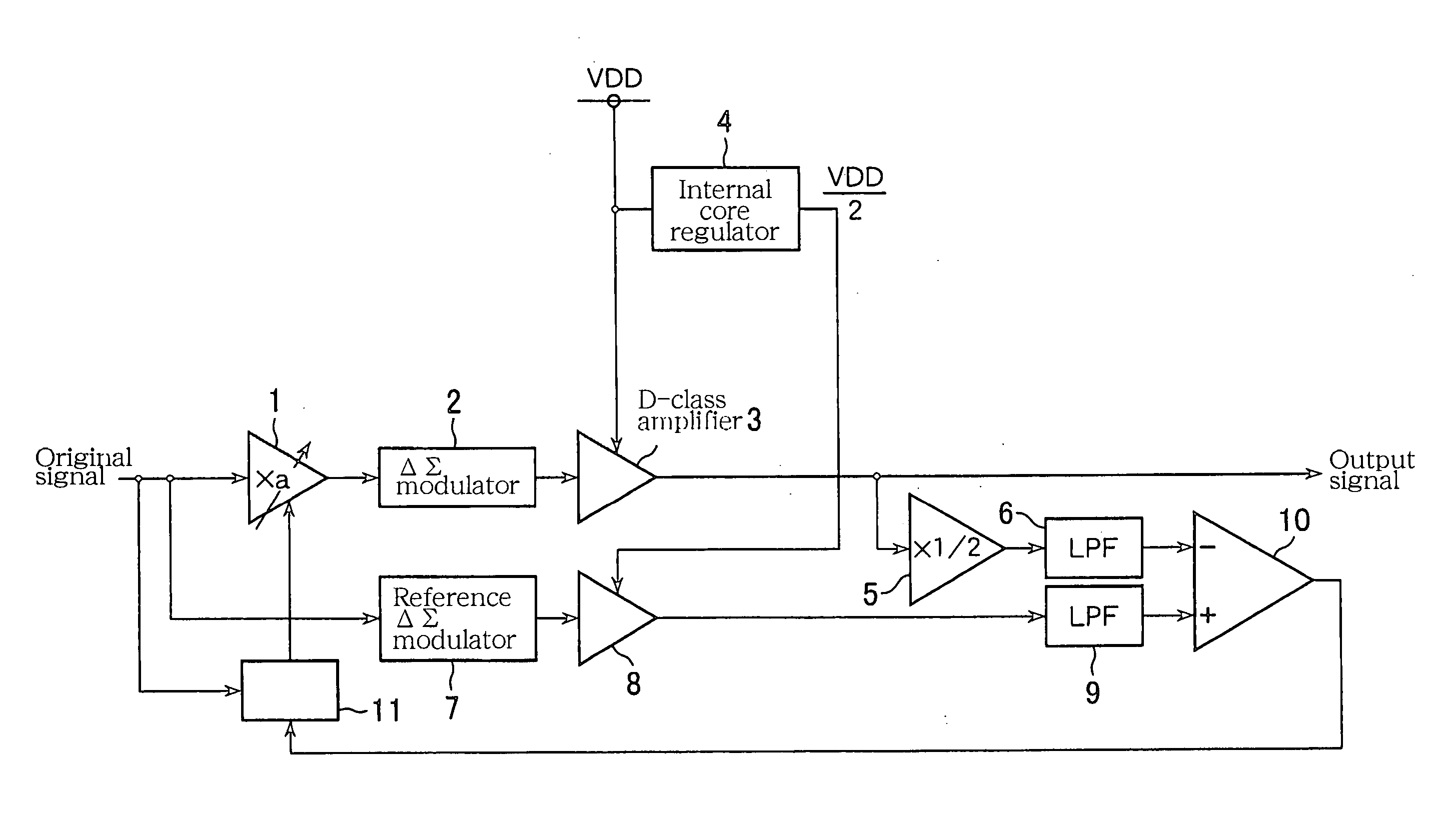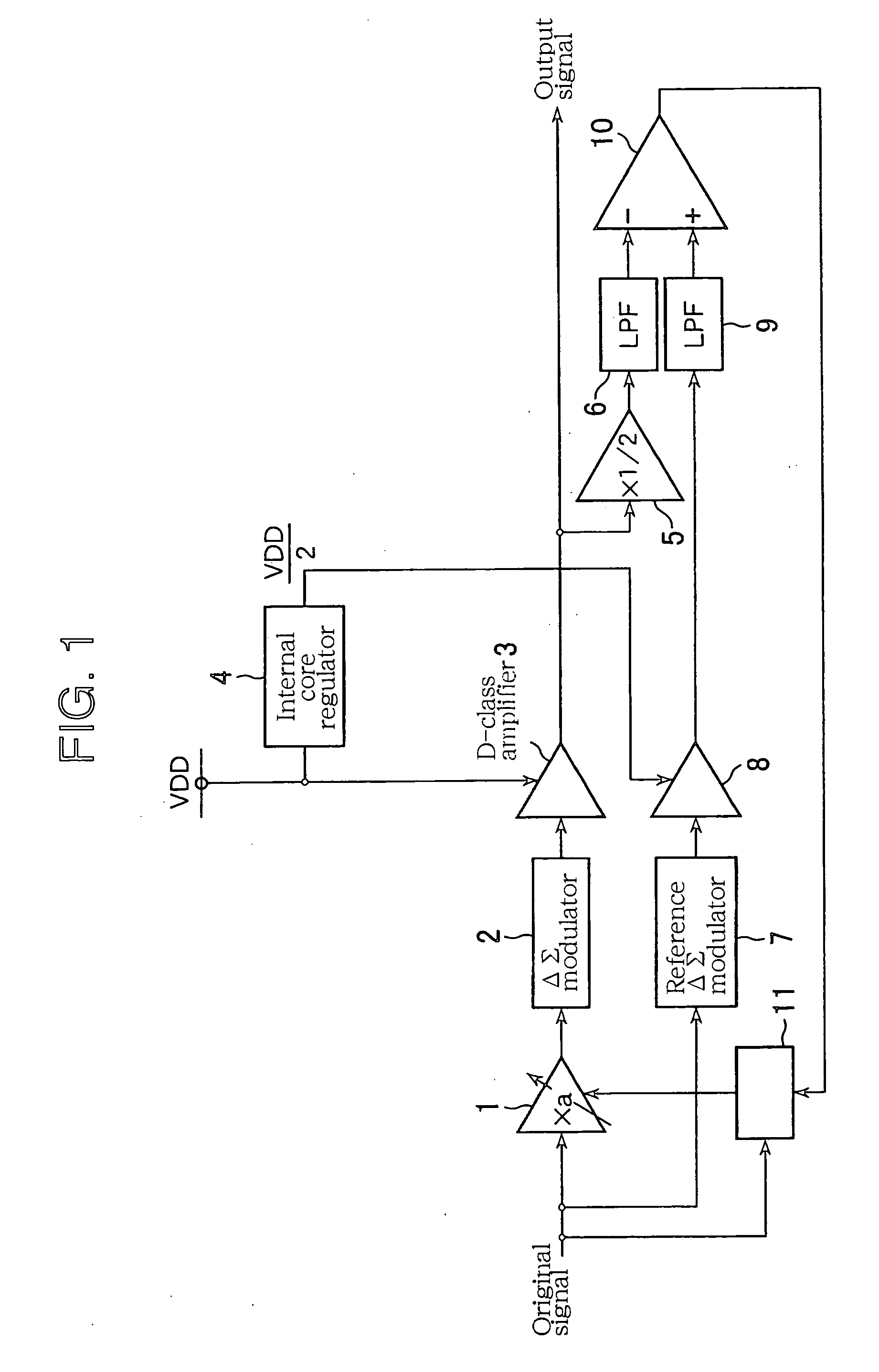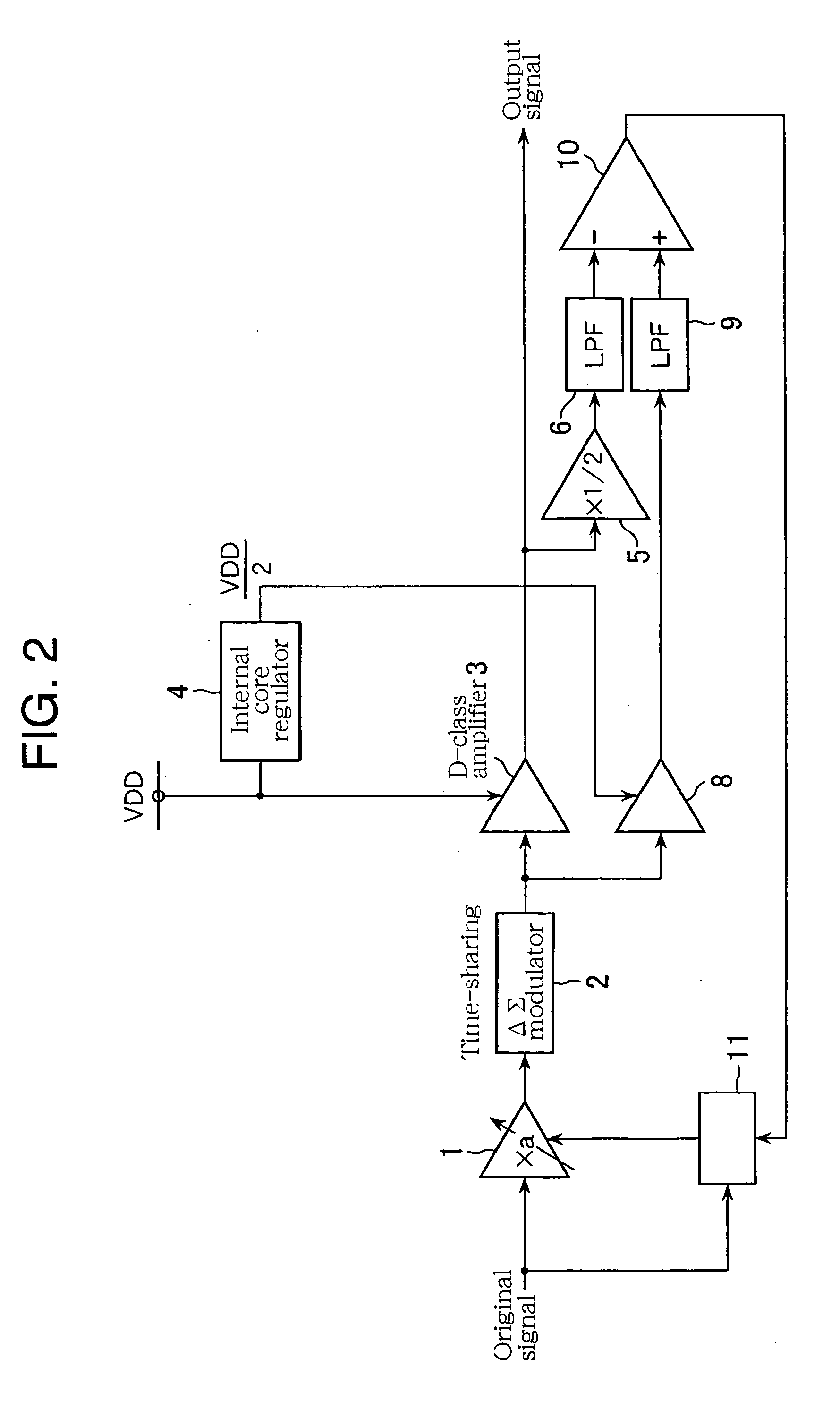D-class signal amplification circuit
- Summary
- Abstract
- Description
- Claims
- Application Information
AI Technical Summary
Benefits of technology
Problems solved by technology
Method used
Image
Examples
first embodiment
(1) First Embodiment
[0028] [Construction]
[0029]FIG. 1 illustrates a D-class signal amplification circuit relating to the first embodiment of the invention. This D-class signal amplification circuit is provided with a function that corrects the fluctuations of the power supply voltage through a feedback loop. Here, the D-class signal amplification circuit will be described with an example, which is used in the output stage of an audio signal-reproducing unit, and drives a sound-reproducing unit such as a speaker.
[0030] In FIG. 1, an original signal as an input signal inputted to an input node is a multi-bit digital audio signal (for example 16 bits). A multiplier 1 multiplies the original signal by a correction coefficient a to thereby adjust a gain thereof. A delta-sigma modulator 2 as the first delta-sigma modulation circuit executes a delta-sigma modulation to the signal that the multiplier 1 has multiplied the original signal being a 16-bit digital signal by the correction coeff...
second embodiment
(2) Second Embodiment
[0044]FIG. 4 illustrates a D-class signal amplification circuit relating to the second embodiment of the invention. The difference from the first embodiment is an addition of a correction timing adjustment circuit 12.
[0045] The correction timing adjustment circuit 12 includes a one-sample delay line 13, an exclusive NOR 14, and a counter 15. The one-sample delay line 13 retains an output before one sample (a previous output) from the comparator 10. The one-sample delay line 13 can be configured with, for example, a D-flip-flop that updates the output at the timing of the clock input falling. The exclusive NOR 14 compares the previous output from the comparator 10, inputted through the one-sample delay line 13, with the current output from the comparator 10; based on the comparison result, if both are equal, exclusive NOR 14 outputs High, and if both are different, it outputs Low. If the input from the exclusive NOR 14 is High, the counter 15 counts up, and when...
third embodiment
(3) Third Embodiment
[0047]FIG. 5 illustrates a D-class signal amplification circuit relating to the third embodiment of the invention. The D-class signal amplification circuit relating to this embodiment includes a correction timing adjustment circuit 16 in replacement for the correction timing adjustment circuit 12 relating to the second embodiment. In the second embodiment, the counter counts the frequency in which the outputs from the comparator 10 are equal in succession, and outputs the adjustment-enabling signal High only when the outputs are equal in the succession of the first predetermined frequency n1. However in this embodiment, the counter counts the frequency in which the continuing outputs from the comparator 10 are each different, and outputs an adjustment inhibiting signal High, when the outputs are each different in the succession of a second predetermined frequency n2.
[0048] The correction timing adjustment circuit 16 includes a one-sample delay line 13, an exclus...
PUM
 Login to View More
Login to View More Abstract
Description
Claims
Application Information
 Login to View More
Login to View More - R&D
- Intellectual Property
- Life Sciences
- Materials
- Tech Scout
- Unparalleled Data Quality
- Higher Quality Content
- 60% Fewer Hallucinations
Browse by: Latest US Patents, China's latest patents, Technical Efficacy Thesaurus, Application Domain, Technology Topic, Popular Technical Reports.
© 2025 PatSnap. All rights reserved.Legal|Privacy policy|Modern Slavery Act Transparency Statement|Sitemap|About US| Contact US: help@patsnap.com



